Student named as MAPs first Junior Ambassador 
AUSTRALIA – 11 year-old Anais had never realized that she would be part of saving the planet, until was selected to enter Northern Territory Education Department Sally Bruyn Senior Primary School Science Awardproject after preparing an 800 word report on Mangroves. Visiting the mangrove boardwalk and interviewing activists and indigenous locals helped Anais discover that she had a role to play in their protection. The report and video that she produced are proof that young people have a major role to play in our planet’s future. Please click the link in this story to view the video she prepared on her findings. Anais presents a strong argument for the protection and preservation of mangrove forests. MAP is extremely proud of young people like Anais, who are passionate about our planet and its protection. We applaud you, Anais, and hope that you will continue to search for solutions to today’s troubling problems. As a Thank You for your hard work, we are hereby proclaiming you to be MAPs first ever Junior Ambassador. We look forward to working with you in the future!
READ MORE AFRICA
Environmental education project in Grand Popo to save mangroves
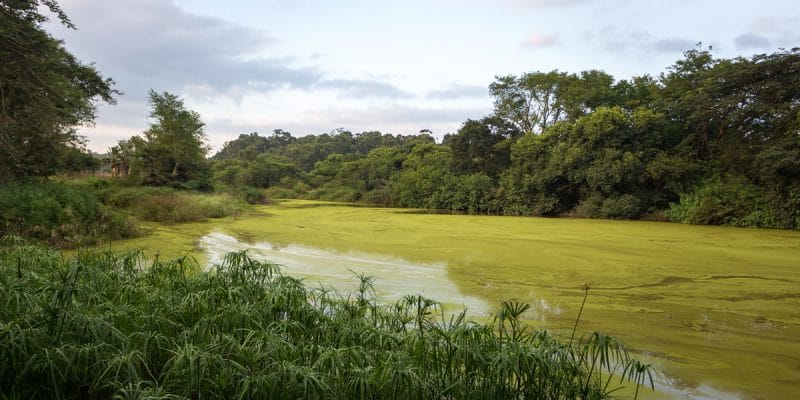
BENIN – Equilibre d’Afrique, a Beninese NGO working to preserve the environment, has just launched a new challenge. The preservation of ecosystems, particularly the mangroves located in the town of Grand Popo, in the west of Benin. On Tuesday, January 15, 2019, the association officially launched the environmental education project for communities for integrated sustainable development at the Grand-Popo Town Hall. Extended over a period of 6 months, and financed by the Swiss Cooperation’s Support Fund for Admissibility Initiatives (FoSIR 2018) for 10,366 euros, or 6,800,000 CFA francs, the project will promote environmentally friendly practices among 3528 people. This includes training and raising awareness among nearly 500 market gardeners about the dangers of chemical fertilisers. “The particularity of the cities of Grand-Popo and Agoué is that market gardening is nowadays carried out between dwellings where no space is spared. This situation exposes populations to the dangers associated with synthetic chemical inputs. In response to these problems, there is an urgent need to find sustainable solutions,” said Anani Hlondji, Mayor of Grand-Popo.READ MORE
ASIA
Three eco-rich sites declared environmentally protected areas
Editor's note: See Last Word below for comments
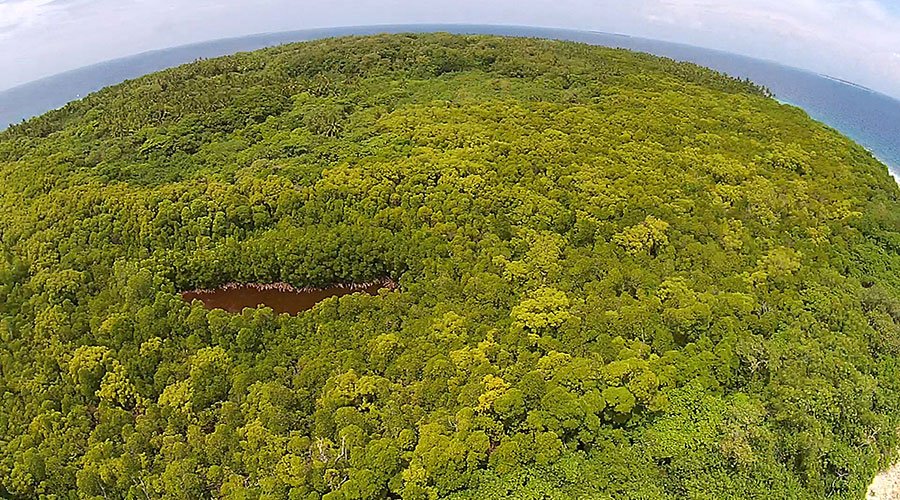
MALDIVES – President Ibrahim Mohamed Solih has decided to declare three eco-rich sites in the northernmost atolls as environmentally protected conservation areas. The sites include the island of Keylakunu in Haa Dhaal atoll, along with its reef and lagoon, and the wetlands and mangroves of the islands of Neykurendhoo and Baarah in Haa Alif atoll. The decision was made following discussions on a paper presented by the environment ministry at Tuesday’s cabinet meeting. The three sites will be protected under the Environment Protection and Preservation Act. “Prior to the Cabinet meeting, a Cabinet working session was held where presentations were delivered on the issue by environment experts,” according to the president’s office. “Members were briefed on the unique and rich eco-systems at the sites, and the urgency to conserve the areas.” Protecting at least one island, one reef, and one wetland from each atoll is part of a first 100-day action plan of the new administration. READ MORE
Swimming camels, mangrove islands of Kutch face mounting challenges

INDIA – In the land of contrasts that Kutch is, winter is the lean feeding season for its unique breed of Kharai camels. These camels, unlike the kind most of us are familiar with, are typically dependent on the mangroves for food, and during monsoons, they swim to the mangrove islands in hordes and stay there for days altogether. The sight of swimming camels, as one can imagine, is spectacular, but faced with challenges such as rapid industrialisation in the coastal areas, and mangrove destruction, their population is dwindling, making it a threatened breed. The story of how the Kharai camels came into being in Kutch draws fascinating tales of folklore and belief. It is said that about 400 years ago, there was a dispute between two brothers in a Rabari family over the lone camel that they possessed. To resolve the issue, they went to Sawla Peer, a holy man, who made a wax camel near the real one and asked each to choose one. The elder brother chose the real camel; to the younger one, Sawla Peer advised to immerse the wax statue in the sea. Thousands of camels then emerged from the sea and started following him. These were the Kharai camels, and the Rabari and Jat community – the two tribes which own and handle these camels – revere it. Some also say that these camels were handed over to these tribes by the erstwhile royalty. READ MORE
AMERICAS
A Time To Krill

ECUADOR – In Ecuador, home to the tallest mangrove trees in the world (forty meters), Dr. Stuart Hamilton of Salisbury University studies the ecological and sociological impacts of mangrove decline. His work emphasizes the impact of shrimp aquaculture, an industry that has exploded in Ecuador over the last forty years. After clearing mangrove forests, farmers cultivate shrimp in large pits dug into the sediment. The pits are crowded and subject to disease, so the farmers infuse them with antibiotics and pesticides. When they become too toxic and diseased to be viable, farmers clear more mangroves and dig more pits, leaving thousands of acres of abandoned, toxic shrimp pits behind them. Ecuador is the second-largest supplier of shrimp to the United States. READ MORE
Unstoppable damage to the mangrove systems in Yucatan, new ecocide in Ría Lagartos
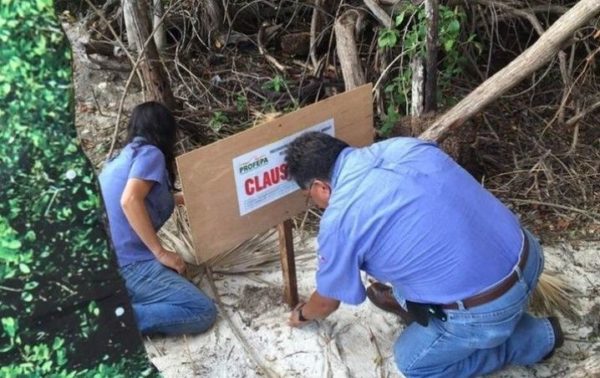
MEXICO – In an area of 2, 500 square meters, within the Natural Protected Area (ANP) Ría Lagartos Biosphere Reserve, in the Municipality of San Felipe, Yucatan, closure seals were placed on a lot, due to environmental damage and affectation of wetlands. Inspectors of the Federal Attorney’s Office for Environmental Protection (Profepa) in the state, in collaboration with the Federal Police and elements of the Ministry of the Navy, during an inspection and surveillance operation, located two affectated areas of 500 and 2,000 m2 respectively, with vegetation characteristic of the wetland ecosystem. In these properties, the inspectors detected cutting and felling of species listed in the official Mexican norm, NOM-059-Semarnat-2010, such as: red mangrove (Rhizophora mangle), white mangrove (Laguncularia racemosa), black mangrove (Avicennia germinans) and botoncillo mangrove (Conocarpus erectus), causing the fragmentation of this habitat. READ MORE
Black mangroves' impact on the salt marsh food web

USA – Warmer temperatures are causing more tropical species to move northward. Among these are black mangroves, whose abundance is steadily increasing in the northern Gulf of Mexico. Black mangroves grow as short trees in a dwarf forest and displace many plants common to Gulf salt marshes. An article published this month, Tropicalization of the barrier islands of the northern Gulf of Mexico: A comparison of herbivory and decomposition rates between smooth cordgrass (Spartina alterniflora) and black mangrove (Avicennia germinans), examines how this tropical species is impacting the salt marsh food web. In this study, researchers with the Dauphin Island Sea Lab, University of South Alabama, and the Mississippi-Alabama Sea Grant Consortium teamed up to determine the black mangroves ability to shift both grazing and decomposer trophic pathways. READ MORE
Mangrove forests can help fight the effects of climate change – but they are in danger

EL SALVADOR – In many tropical areas, dense mangrove forests line the shore. The trees’ tangled, exposed roots withstand the ebb and flow of daily tides.By slowing the movement of water and trapping sediment, mangroves help stabilize coastlines and reduce the impacts of storm waves and flooding – growing threats as the climate changes. These distinctive trees also help reduce global warming because their rich, waterlogged soil can absorb and store a great deal of carbon. But many mangrove forests are disappearing. “Throughout the world they’re absolutely endangered through development, through industrial agriculture, through other sorts of human activities like illegal logging.” That’s Karolo Aparicio of the nonprofit Ecoviva. The group is part of a coalition working to restore mangrove forests in El Salvador. READ MORE
Residents Association Reports Destruction of Mangrove, Harm to Turtles and Illegal Construction on Santa Cruz Beach
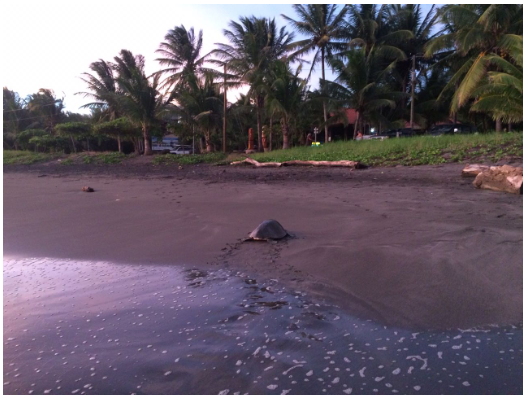
GUATEMALA – A group of Marbella residents and members of the Marbella Verde association reported to Santa Cruz City Hall the deforestation of a mangrove near the Playa del Coco estuary. Residents also reported nesting difficulties that turtles face due to lights that disorient them, which, according to the residents, comes from a restaurant. Another of their complaints is that the restaurant and other buildings may have been illegally built in the maritime zone (ZMT). In August 2018, city geologist Geissel Gutiérrez confirmed that trees had been cut down during a field visit. Gutiérrez found that logs and pieces of trees in the mouth of the one of the gutters that leads to the beach. She recommended that the mayor get in touch with the Ministry of Environment (MINAE) to report the damage to the mangrove. The Voice of Guanacaste tried to get in touch with the mayor, but she didn’t respond to calls and messages sent to her cell phone by the time this newspaper went to print. Minae still doesn’t have a report of the damage to the mangrove since residents have not yet filled one. READ MORE
EUROPE
Small mangrove patches
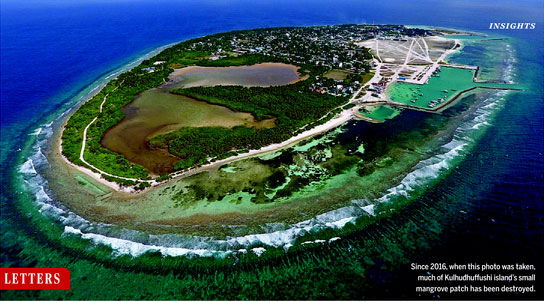
U.K. – The loss of relatively small patches of mangrove may seem less concerning than large-scale deforestation. However, these patches are especially important to low-lying island nations vulnerable to climate change and sea-level rise. Their interconnectedness with adjacent habitats, such as coral reefs, allows them to provide substantial ecosystem services relative to their size. The continued loss of mangrove patches further fragments mangrove habitat, which creates barriers to species movement and dispersal. The loss also drastically erodes local coastal resilience and pushes key mangrove ecosystems toward collapse. Given the recent Intergovernmental Panel on Climate Change’s projections, we simply cannot afford to lose more mangrove forests, irrespective of their size. We call on governments to move away from policy decisions that prioritize large areas and short-term local political gains and instead adopt a more holistic long-term vision, whereby the value of smaller mangrove patches is better appreciated and safeguarded. READ MORE
Global
Mapping the world's 'blue carbon' hot spots in coastal mangrove forests
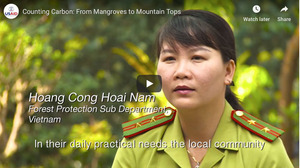
GLOBAL – Human actions have boosted carbon dioxide concentrations in the atmosphere to levels higher than any measured over the last 160,000 years. Rising concern over the risk of severe impacts from climate change is spurring research into ways in which ecosystems may mitigate global warming by storing excess carbon in plants and soil.Our research group has studied the ecology of mangroves for over 40 years.In a recent study, we have shown that previous studies have overestimated blue carbon storage in some river delta areas, such as the Amazon in Brazil; the Sundarbans region in India, where the Ganges, Brahmaputra and Meghna rivers converge; the Zambezi delta in Mozambique; and the Indus river delta in Pakistan. Others have grossly underestimated blue carbon storage in carbonate (peat-dominated) coastlines, such as Belize, the Florida Keys, Puerto Rico, Mexico's Yucatan, Cuba, the Dominican Republic and several Caribbean islands.The key to improving these estimates, we found, is to factor in how rivers, tides, waves and climate shape coastal landforms to create different environmental settings. Using this approach, we have produced a more accurate estimate of global blue carbon "hot spots" – an important first step toward protecting them. READ MORE
LAST WORD
We at MAP are convinced that a major effort must be made globally to conserve remaining primary mangrove forests, and the loss of such primary forests has terrible repercussions for our planet's health and cannot be effectively addressed by any remedial efforts to restore mangroves. Even MAP's Community-based Ecological Mangrove Restoration (CBEMR) best practices approach can never re-establish the full biodiversity of a destroyed mangrove ecosystem, which consists of far more than the mangrove trees and their associate plant species. The mangrove ecosystem includes all the life forms that it encompasses, including the marine life, insects, mammals, reptiles and migratory birds. As well the vital functions and services that healthy mangroves provide are significantly weakened by such loo of primary mangroves as we are sadly witnessing now in the Maldives.
With this in mind, we at MAP are working with others from the Mangrove Specialist Group to halt further destruction of the primary mangrove forests of the Maldives. We are co-signers on a recently published letter in Science that addresses these issues.
Also, I am submitting a letter to the president of the Maldives regarding the urgent need to protect the remaining mangroves of the Maldives island chain from further ruin, Please write your own letters if you can, as the more of us submitting letters will better the prospects for a positive change in government development policy. This is the time to act now to save the remaining primary mangrove forests before none remain!
For the Mangroves and Mangrove Communities,
Alfredo Quarto, Co founder,
Mangrove Action Project
Back to Top




























